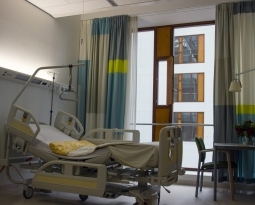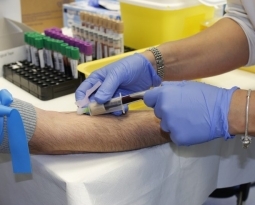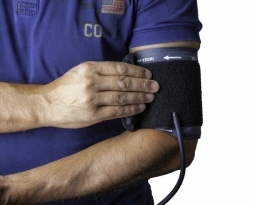Missouri Patent of the Month – December 2020
Most of us don’t encounter the risk of falling in our daily lives. Especially now that some of us are in lockdown and activities are limited, the risk is even lower. However for some, a simple topple over can have fatal consequences. Elderly are at a much greater risk of falling as they tend to have lower bone density, weaker eyesight, and less muscle mass. This can lead to broken bones and head injuries, and often a difficult recovery – especially when the individual is over 65. The current fall risk assessment method is very subjective and flawed since it’s based on a patient questionnaire and facility observation of patient behaviour. Many individuals who are not at risk are also forced to be in wheelchairs because assessments take a long time to complete. This method only reduces fall risk by 20%. To decrease falls and improve fall risk assessments, Foresite Healthcare developed a new system for automatic fall risk assessment.
Foresite Healthcare’s assessment system eliminates personal bias or the skill needed to make observations and evaluations, meaning it can be more widely used by facility personnel. To determine a person’s fall risk, the system integrates the objective evaluation of their gait and stance through machine observation and calculations. Multiple sensors linked to a central server system detect and monitor movement. The sensors include a bed sensor that monitors the individual’s movements when getting out of bed and the amount of time spent in bed, and sensors that detect the time it takes someone to stand from sitting and another that detects their gait. Other factors are also integrated into the assessment, such as whether or not they’re undergoing a treatment or using an assisted device and their medical history. With this data, the central server will then determine the individual’s fall risk and send the data to an electronic medical records database where it can be accessed by facility personnel.
Are you developing a new system? Did you know your development work could be eligible for the R&D Tax Credit and you can receive up to 14% back on your expenses? Even if your development isn’t successful your work may still qualify for R&D credits (i.e. you don’t need to have a patent to qualify). To find out more, please contact a Swanson Reed R&D Specialist today or check out our free online eligibility test.
Who We Are:
Swanson Reed is one of the U.S.’ largest Specialist R&D tax advisory firms. We manage all facets of the R&D tax credit program, from claim preparation and audit compliance to claim disputes.
Swanson Reed regularly hosts free webinars and provides free IRS CE and CPE credits for CPAs. For more information please visit us at www.swansonreed.com/webinars or contact your usual Swanson Reed representative.

















